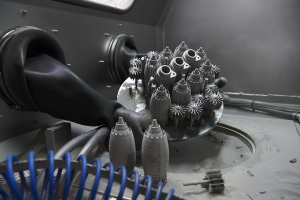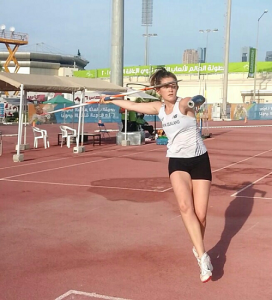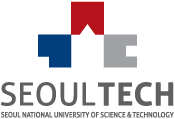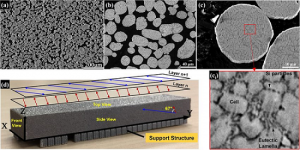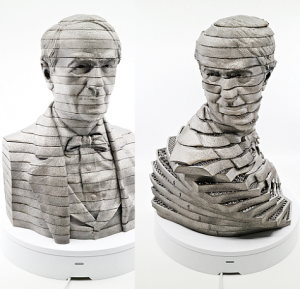We’re all business in today’s 3D Printing News Briefs! MakerBot has a new distribution partner, and ANSYS is launching a new product. Sintavia has acquired an additional Arcam 3D printer from GE Additive. Finally, Nexa3D and Henkel are introducing a new material for 3D printing medical and athletic devices.
MakerBot Welcomes New Distribution Partner
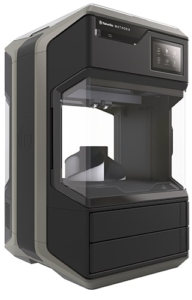 MakerBot announced that it has expanded its distributor network by entering into an agreement with the Distrinova division of the Unitum Group, which will distribute the MakerBot METHOD 3D print platform throughout Belgium, the Netherlands, and Luxembourg. This partnership will increase the availability of the entire platform, which offers industrial capabilities and engineering-grade materials, to more customers in the Benelux region who need professional, powerful 3D printing solutions. The METHOD platform consists of the METHOD and METHOD X printers, various accessories like an experimental extruder, METHOD Carbon Fiber editions, and materials like Nylon Carbon Fiber, ABS, ASA, SR-30, and PC-ABS FR, and Distrinova’s network of channel partners will distribute all of them, in addition to MakerBot’s educational 3D printing solutions.
MakerBot announced that it has expanded its distributor network by entering into an agreement with the Distrinova division of the Unitum Group, which will distribute the MakerBot METHOD 3D print platform throughout Belgium, the Netherlands, and Luxembourg. This partnership will increase the availability of the entire platform, which offers industrial capabilities and engineering-grade materials, to more customers in the Benelux region who need professional, powerful 3D printing solutions. The METHOD platform consists of the METHOD and METHOD X printers, various accessories like an experimental extruder, METHOD Carbon Fiber editions, and materials like Nylon Carbon Fiber, ABS, ASA, SR-30, and PC-ABS FR, and Distrinova’s network of channel partners will distribute all of them, in addition to MakerBot’s educational 3D printing solutions.
“We are very proud to introduce MakerBot and the METHOD technology into our product portfolio,” said Guy Van der Celen, CEO of Unitum Group BV. ” With the METHOD range we can provide our resellers network not only reliable, state-of-the-art 3D printers, but also the opportunity to offer their customers high value-added solutions for a broad range of new application areas. In addition, the introduction of MakerBot corresponds perfectly with Distrinovas’ strategy to develop strong partnerships with the leading innovative global manufacturers of 3D printers.”
ANSYS Event to Launch Discovery Product
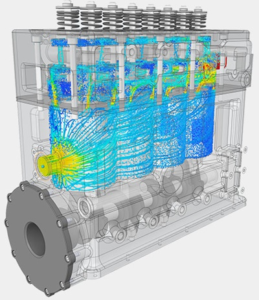 Engineering simulation software company ANSYS released its Discovery Live tool for real-time 3D simulation back in 2017, and will soon be introducing a brand new ANSYS Discovery product, kicking things off with a virtual launch event on July 29th. The company states that the product can help companies improve their product design processes, increase ROI, and provide answers to important design questions earlier, without having to wait for the results of a simulation.
Engineering simulation software company ANSYS released its Discovery Live tool for real-time 3D simulation back in 2017, and will soon be introducing a brand new ANSYS Discovery product, kicking things off with a virtual launch event on July 29th. The company states that the product can help companies improve their product design processes, increase ROI, and provide answers to important design questions earlier, without having to wait for the results of a simulation.
“This reimagining of the Discovery line of products aims to maximize ease of use, speed and accuracy across thermal, structural, fluids and multiphysics simulation all from within a single consistent user interface (UI),” Justin Hendrickson, Senior Director, Design Product Management, wrote in a blog post about the new ANSYS Discovery.
“Traditionally, simulation has been used during later stages of design when making corrections can be costly and time consuming. However, with the new Ansys Discovery, every engineer will be able to leverage simulation early during concept evaluation as well as during design refinement and optimization. This means that they will be able to optimize products and workflows faster and on a tighter budget.”
The launch event will feature a keynote address from Mark Hindsbo, Vice President and General Manager, Design Business Unit, a product demonstration by Hendrickson, two customer success stories, and several interactive breakout sessions, including one focusing on thermal simulation and another exploring the tool’s generative design capabilities. You can register for the event here.
Sintavia Acquires Second Arcam Q20+ 3D Printer
 Tier One metal additive manufacturer Sintavia announced that it has acquired a second Arcam Q20+ 3D metal printer from GE Additive, bringing its total number of electron beam printing systems to three and its overall number of industrial metal 3D printers to nineteen. This additional Arcam Q20+ will be installed next month in Sintavia’s Hollywood, Florida production facility, where the other Q20+ is located with an Arcam A2X, a Concept Laser M2, three SLM 280 systems, a Trumpf TruPrint 3000, and nine EOS 3D printers – six M400s and five M290s.
Tier One metal additive manufacturer Sintavia announced that it has acquired a second Arcam Q20+ 3D metal printer from GE Additive, bringing its total number of electron beam printing systems to three and its overall number of industrial metal 3D printers to nineteen. This additional Arcam Q20+ will be installed next month in Sintavia’s Hollywood, Florida production facility, where the other Q20+ is located with an Arcam A2X, a Concept Laser M2, three SLM 280 systems, a Trumpf TruPrint 3000, and nine EOS 3D printers – six M400s and five M290s.
“Over the past several years, we have worked to qualify the Q20+ for aerospace manufacturing and now have several aerostructure product lines that depend on this technology. Electron beam printing is an excellent option for complex titanium aerospace components, and this business line will continue to grow for us. Even in a difficult overall manufacturing environment, the demand we have seen for EB-built components is very encouraging,” stated Sintavia CEO Brian R. Neff.
Nexa3D and Henkel Commercializing New Material Together
Together, SLA production 3D printer manufacturer Nexa3D and functional additive materials supplier Henkel are commercializing the polypropylene-like xMED412, a durable, high-impact material that can be used to print biocompatible medical and wearable devices. Henkel is the one manufacturing the medical-grade material, which is based on its own Loctite MED412 and was designed to offer high functionality and consistent part performance—perfect for printing products like athletic and diving mouth gear, respirators, orthotic guides and braces, and personalized audio projects. The lightweight yet sturdy xMED412 material, which can withstand vibration, moisture, and impact, has been tested by Henkel Adhesive Technologies on the NXE400 3D printer, and is now also cleared to print nasal swabs.
“We are thrilled to bring this product to market in collaboration with Nexa3D. We developed and tested with Nexa3D’s NXE400 3D printer a multitude of approved workflows designed to unleash the full potential of xMED412’s outstanding physical properties and biocompatibility,” said Ken Kisner, Henkel’s Head of Innovation for 3D printing. “Nexa3D and Henkel have provided a digital manufacturing solution for a growing number of medical devices, athletic wearables and personalized audio products. Especially with regard to the current Covid-19 pandemic, we are pleased that nasopharyngeal swabs manufactured with xMED412 on the NXE400, in accordance with our published procedures, have already been cleared through clinical trials and are in compliance with ISO 10993 testing and FDA Class I Exempt classification.”
The post 3D Printing News Briefs, July 25, 2020: MakerBot, ANSYS, Sintavia, Nexa3D & Henkel appeared first on 3DPrint.com | The Voice of 3D Printing / Additive Manufacturing.



